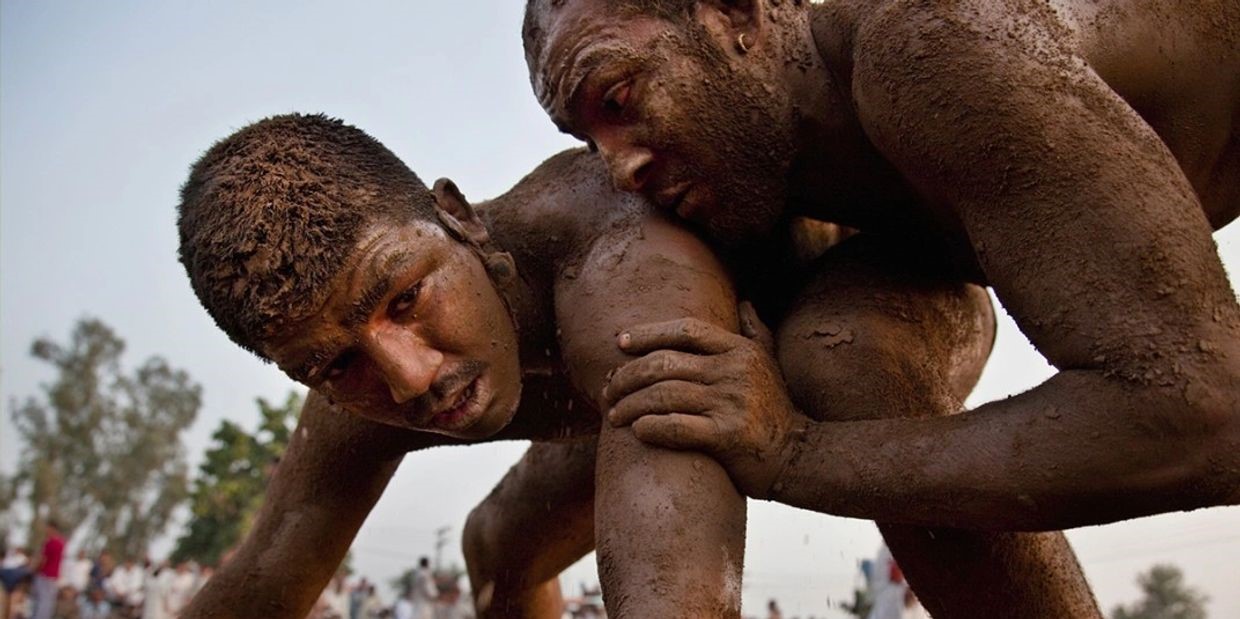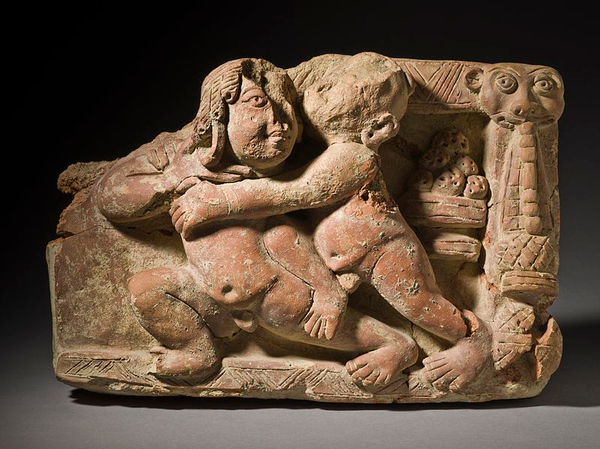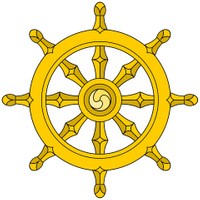
Mallyuddha or Malla-yuddha (India, Pakistan, Bangladesh, Nepal, Sri Lanka)
- Name of sport (game): Mallyuddha or Malla-yuddha
- Name in native language: Devanagari: मल्लयुद्ध, Bengali: মল্লযুদ্ধ, Odia: ମଲ୍ଲ ଯୁଦ୍ଧ, Kannada: ಮಲ್ಲಯುದ್ಧ, Telugu: మల్ల యుద్ధం malla-yuddhaṁ, Tamil: மல்யுத்தம் malyutham, Thai: มัลละยุทธ์ mạllayutṭh̒
- Place of practice (continent, state, nation):
Mallyuddha is the traditional South Asian form of combat-wrestling created in what is now India, Pakistan, Bangladesh, Nepal and Sri Lanka.
- History:
The first literary reference to malla-yuddha itself lies in the Mahabharata, an ancient Indian epic dating from the 5th century BC (although the original copy likely dated back as early as 9th century BC). However, wrestling in general in South Asia, and likely a form malla-yuddha itself, is linked back to at least the 3rd millennium BC. Badang, a legendary Malay folk hero of oral tradition, is said to have practiced malla-yuddha, though the period in which his legend is set is unspecified.
Before the Muslim conquest of India between the 12th and 16th centuries AD, malla-yuddha was enjoyed among all classes, from kings to peasants. Opposing kings would sometimes pit royal wrestlers against each other in lieu of war and other conflicts. Even kings themselves would occasionally engage in matches.
Royalty and nobility would host public tournaments within palace courtyards throughout thus period, often offering a large monetary prize to the winner. These tournaments brought in both casual and professional competitors from the surrounding areas. Sometimes the rich would hire professional wrestlers in an attempt to draw in more of a crowd. These events were highly celebrated and featured performances from other arts as well.
Though there were many casual wrestlers, the spectator sport was dominated primarily by professional wrestlers. These athletes devoted their lives to malla-yuddha, often living in an institution called an akhara and training under the supervision a guru. They were to follow a strict training regime and abstain from alcohol and sexual contact to keep their bodies pure and optimally primed for their profession. Sometimes royalty or nobility would serve as patrons for one or several wrestlers, funding their lifestyle and careers.
The sport’s popularity faded out throughout most of South Asia by the 16th century, though it still persisted in some areas to the south.
Source: https://healthandfitnesshistory.com/ancient-sports/malla-yuddha/
Source of photo: https://healthandfitnesshistory.com/images/terracotta-sculpture-indian-wrestlers-d/ - Description:
Malla-yuddha incorporates grappling, joint-breaking, punching, biting, choking and pressure point striking. Matches were traditionally codified into four types which progressed from purely sportive contests of strength to actual full-contact fights known as yuddha. Due to the extreme violence, this final form is generally no longer practised. The second form, wherein the wrestlers attempt to lift each other off the ground for three seconds, still exists in south India. Additionally, malla-yuddha is divided into four styles, each named after Hindu gods and legendary fighters:
• Hanumanti concentrates on technical superiority,
• Jambuvanti uses locks and holds to force the opponent into submission,
• Jarasandhi concentrates on breaking the limbs and joints while
• Bhimaseni focuses on sheer strength. - Current status:
Practiced
- Contacts:
IFM - International Federation of Mallyuddha
C/o National Martial Arts Academy India
Pari Chowk, Pari Chowk, Greater Noida, Uttar Pradesh, India
Email:This email address is being protected from spambots. You need JavaScript enabled to view it.
Webside: http://www.mallyuddha.org/
- Sources of information :
Books:
Alter, J. S. (1992). The wrestler’s body: Identity and ideology in north India. Berkeley: University of California Press.
Draeger, D. F., & Smith, R. W. (1985). Comprehensive Asian fighting arts. Tokyo: Kodansha International.Articles:
https://healthandfitnesshistory.com/ancient-sports/malla-yuddha/
https://www.emilianopinnizzotto.com/malla-yuddha
https://www.sportskeeda.com/wrestling/how-can-india-ancient-form-wrestling-kusti-revived
http://www.iagtok.com/project/wrestling-kushti/
https://en-academic.com/dic.nsf/enwiki/2155381
https://www.hindu-blog.com/2021/10/wrestling-in-ancient-hinduism-malla.htmlPhotos:
https://nimitnigam.wordpress.com/tag/story/
https://www.mitchellk-photos.com/photography/2016/3/7/kushti-ancient-indian-wrestling
https://www.buzzfeed.com/shayanroy/the-pehelwans-of-pune
https://kushtiwrestling.blogspot.com/2011/05/
https://www.moscowfotoawards.com/winners/hm/2016/3902/Video:
https://www.youtube.com/watch?v=htYmhyE878Y
https://www.youtube.com/watch?v=oGlT9F927sk
https://www.youtube.com/watch?app=desktop&v=dy_6-5Kx2Fk
https://www.youtube.com/watch?app=desktop&v=YXHfG_EUpi0
https://www.youtube.com/watch?v=HufEWTgOItk
https://www.youtube.com/watch?app=desktop&v=CPREgEX7AJgThe information contained in the article comes from the following sources:
https://healthandfitnesshistory.com/ancient-sports/malla-yuddha/Source of photos used in this article and gallery:
https://www.sportskeeda.com/wrestling/how-can-india-ancient-form-wrestling-kusti-revived
https://healthandfitnesshistory.com/ancient-sports/malla-yuddha/
https://www.fitternity.com/article/5-martial-art-forms-that-evolved-in-india
https://www.storypick.com/indian-martial-arts/
https://www.eatmy.news/2021/05/different-types-of-martial-arts-in-india.html
https://kushtiwrestling.blogspot.com/2010/06/kushti-photos-from-sangvi-mamasaheb.html
https://ceg.edu.vn/kushti-logo-rggc3wrl/#google_vignette
https://alchetron.com/Malla-yuddha - Gallery:

